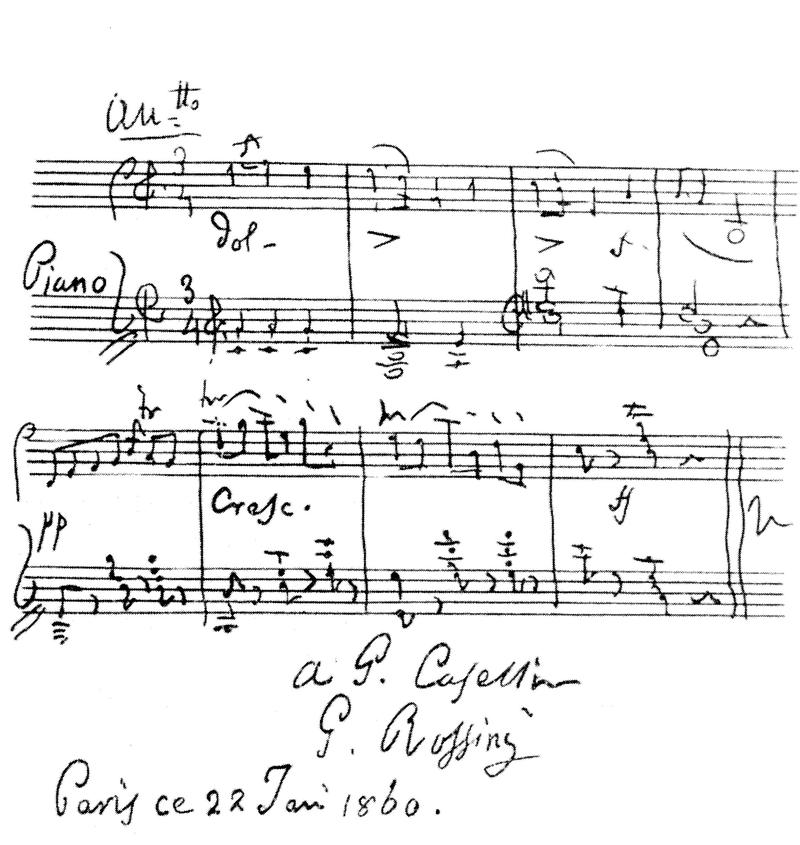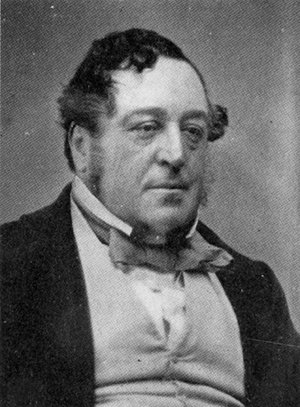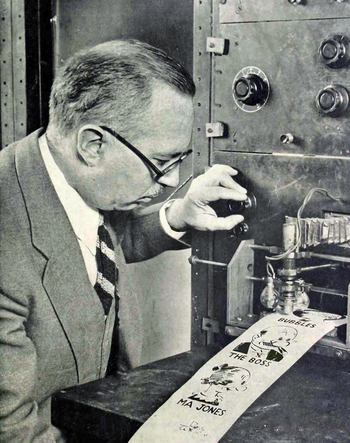 NYPR Archives & Preservation
NYPR Archives & Preservation
Just the Fax: Rossini and WQXR Share More than Broadcasts

WQXR has been an excellent place to hear the work of opera composer Gioachino Rossini. The station and its co-founder, John V. L. Hogan, were also pioneers in the electronic newspaper-delivery business. What, you may ask, is the connection? Dear reader, read on.
WQXR started as an experimental television station, W2XR, in 1929, created by Hogan.[i] We may never know what television programming he hoped to transmit, but opera had been suggested in the earliest-known publication about television, in 1877.[ii] A Polish inventor published a detailed description the following year of the apparatus necessary to televise performances of opera-singer Adelina Patti.[iii] And, in 1891, Thomas Edison told reporters he might show Patti’s opera performances on a color-TV-like apparatus at the World’s Columbian Exposition in Chicago.[iv]
Unfortunately, television, even ten years after Hogan created W2XR, was not the successful medium it later became. In its sub-headline of a report of a televised baseball game in 1939, The New York Times noted, “Spectators at Screen Unable to Follow Action, but the Announcer Tells Story.”[v] Hogan also experimented with facsimile (fax) image transmissions and accompanied them with recorded classical music. It was those broadcasts of classical-music that led to radio station WQXR.
Unlike television, fax-by-wire was a well-established medium by 1929; the earliest commercial service had begun in France in 1865 for such purposes as signature verification.[vi] The apparatus used at that time was Giovanni Caselli’s “pantélégraphe,” which could transmit still images down telegraph lines.
Fleeing uprisings related to the Sicilian revolt, Rossini moved from Bologna to Florence in 1848.[vii] Affected by the same unrest, Caselli, too, moved there one year later, where he taught physics at the University of Florence.[viii] Caselli moved to Paris in 1856 to get financial and technical support for his fax machine project; Rossini had moved a year earlier.[ix]
The two Italian expatriates became friends in Paris. So, to help promote his friend's pantélégraphe system, Rossini composed a short piece of music and successfully transmitted the sheet (shown above) by fax from Paris to Amiens over telegraph lines on January 22, 1860.[x] Rossini died in Paris in 1868. When his remains were returned to Florence in 1887, both the original sheet and the received fax version were exhibited at the Circolo Filologico cultural center to show how the maestro was also a pioneer of image transmission.
That was fax-by-wire. Fax-by-radio, however, was a different story. Instead of voltages over telegraph lines, it utilized broadcast audio that sounded like noise. Interference could make documents unreadable. Limited broadcast bandwidth made fax transmissions slow, and fax time ate into listening time, so the government restricted fax transmissions to the hours of midnight to 6:00 AM.[xi]
The authorization of FM radio broadcasts solved those problems. Frequency modulation was relatively static-free, utilized greater bandwidth, and, with multiplexed subcarrier frequencies (later used to carry stereo sound), FM could carry fax transmissions and listener programming simultaneously without interference. So, in 1948, WQXR, then owned by The New York Times, transmitted four-page facsimile editions of the newspaper six times a day, starting at 11:00 AM. Each page took three-and-a-half minutes to transmit, with receivers located at 14 department stores.[xii]
Technically, the faxing of newspapers via radio was quite successful and might be said to have presaged the era of internet news. But, at the time, the cost to buy a full-size, multipage copy of the actual newspaper was just three cents, and, after home delivery or picking it up from a vendor, there was no wait to read it. WQXR’s fax delivery was a mere flash in the pan.
Ah, well.
_________________________________
[i] “Early Television Stations,” Early Television Museum
[ii] Electrician, “The Electroscope,” The Sun [New York], March 30, 1877, p. 2
[iii] Julijan Ochorowicz, “O moz˙nos´ci zbudowania przyrza¸du do przesyłania obrazów optycznych na dowolna¸ odległos´c´” [On the Possible Construction of a Device for Transmitting Optical Images at Any Distance], Kosmos, v.3, 1878, pp. 73–79
[iv] “Edison’s Latest Invention,” Evening Post [Wellington, New Zealand], June 27, 1891, p. 1.
[v] “First Television of Baseball Seen,” The New York Times, May 18, 1939, p. 29
[vi] Eilene Zimmerman, “The Evolution of FinTech,” The New York Times, April 7, 2016, Section F, p. 8
[vii] Richard Osborne, Rossini, Oxford & New York: Oxford University Press, 2007, p. 140
[viii] Jonathan Coopersmith, Faxed: The Rise and Fall of the Fax Machine, Baltimore: Johns Hopkins University Press, 2015, pp. 18-19
[ix] Osborne, p. 144
[x] Herbert Weinstock, Rossini: A Biography, New York: Alfred A. Knopf, 1968, p. 311
[xi] “Fourth Annual Report, Federal Communications Commission,” Washington: USGPO, 1939
[xii] David W. Dunlap, “Looking Back, 1948: ‘A Newspaper Delivered by Radio,’” Times Insider, October 2, 2014,

